Can You Use Blue Electrical Boxes in Basement
1 / 11
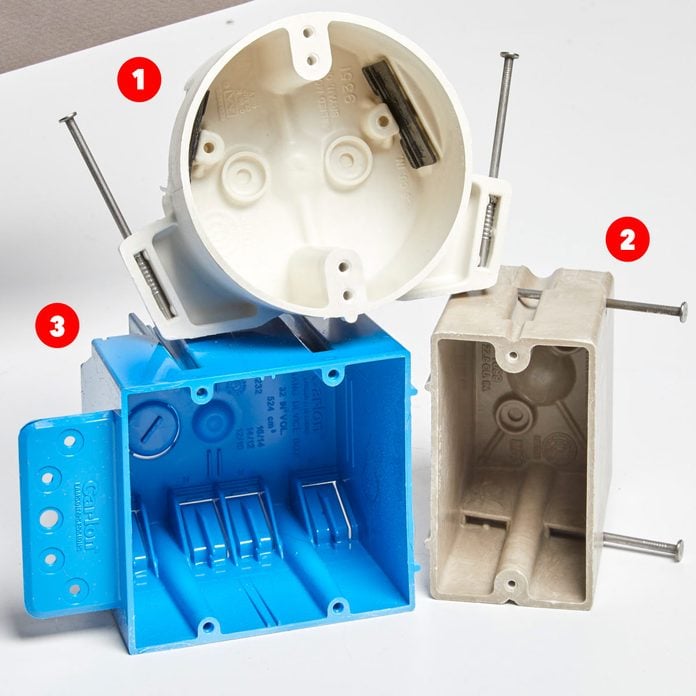
New work: 3 types do it all
If you have the walls opened up for remodeling or putting on an addition, these three boxes cover about 99 percent of your needs.
- 22-CU.-IN. 4-IN. ROUND BOX for ceiling light fixtures, smoke alarms, carbon monoxide detectors and wall sconce light fixtures.
- 22-CU.-IN. SINGLE-GANG BOX for a typical outlet or switch.
- 32-CU.-IN. DOUBLE-GANG BOX for two light switches together in the same box, or two duplex receptacle outlets.
The purpose of electrical boxes
Wiring connections—where wires join an outlet, switch or other wires—must be inside an electrical box. Here's why: Connections are the weak link in an electrical system. If they get damaged, loosened or pulled apart, you're left without power, or worse, with a fire. Electrical boxes are simply meant to protect vulnerable connections.
Next, read: The 8 Most Common National Electric Code Violations DIYers Make.
2 / 11
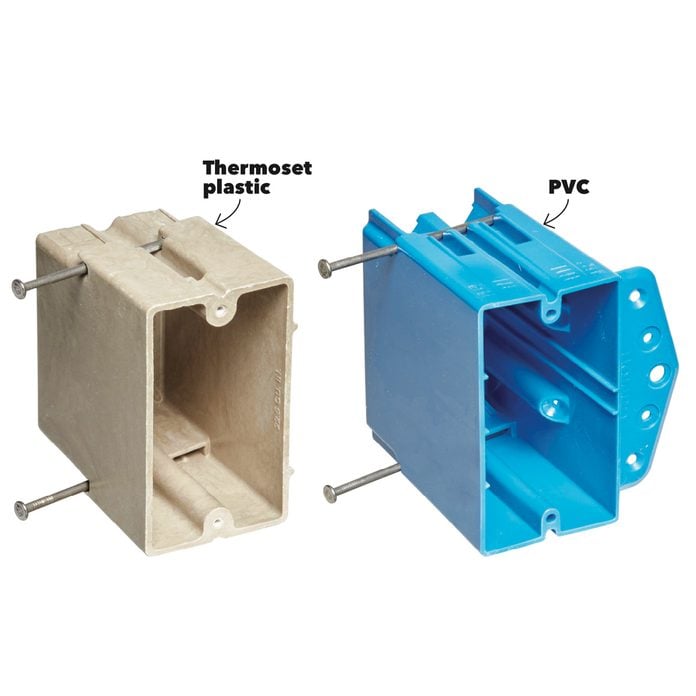
Box material
Indoor nonmetallic boxes are typically plastic or fiberglass. Cheap PVC boxes like the one shown at far right work fine, but they can move or distort in wood framing as the studs dry. I prefer to spend the extra 20¢ per box on heavy-duty thermoset plastic or fiberglass boxes. Unlike PVC boxes, they're super strong and maintain their shape.
Box Size
Wires, receptacles and switches need adequate space. Crowded boxes can damage wires, resulting in a fire or shock hazard. You can use the chart below to calculate the required box size. Add up the numbers for the correspond- ing components in the box to find how many cubic inches you'll need. In most cases, I skip the math and just buy the largest volume box available in the style I need. I've never been frustrated by having a box that was too large.

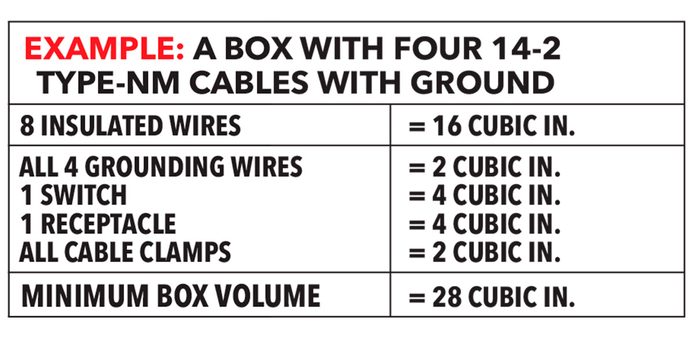
3 / 11

Ceiling fan boxes
If you're hanging a ceiling fan, you'll need a box designed to support the extra weight. These boxes for ceiling paddle fans are sold as kits, with a wide variety of mounting options for new work and old work (defined below). Boxes that are the sole support of the fan have to be rated for up to 70 lbs. If the fan is sup- ported independently of the box, you can use a general-purpose box.
Low-Voltage Outdoor Lighting
4 / 11
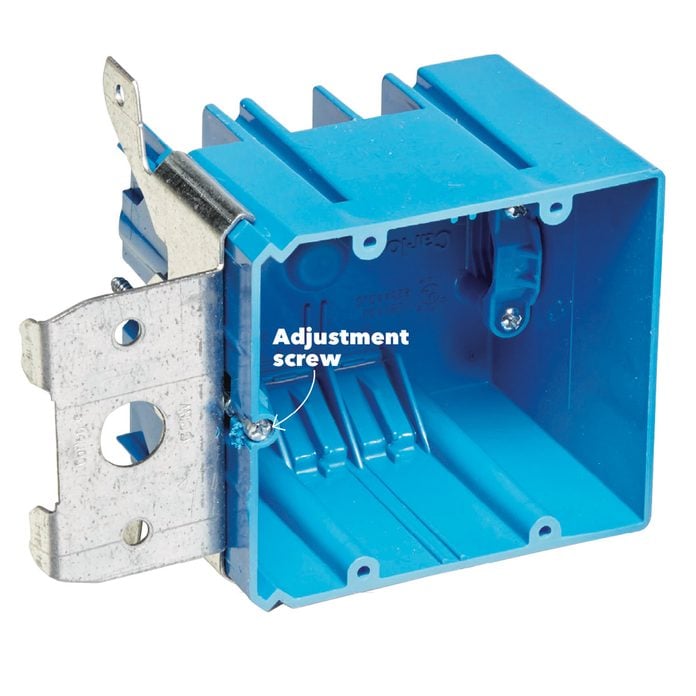
Adjustable boxes
If you know you'll be installing ceramic tile or wood paneling or wainscoting, buy adjustable boxes. They're mounted to the framing members like any other box;
you just turn a screw to adjust the depth flush with the wall treatment. The adjustment screw is accessible even after the wall treatment is applied.
Wiring a Plug: Replacing a Plug and Rewiring Electronics
5 / 11

Exterior surface-mount boxes
Exterior surface-mount boxes—often molded PVC—have either threaded or glued hubs and are used with PVC electrical conduit. I like cast-aluminum boxes for outdoor projects. They're extra durable and weatherproof. They often come as a kit, including a ground-fault circuit interrupter (GFCI) receptacle and a weatherproof cover, or as a lighting kit with gaskets and lamp holders for floodlights.
12 Tips for Easier Home Electrical Wiring
6 / 11
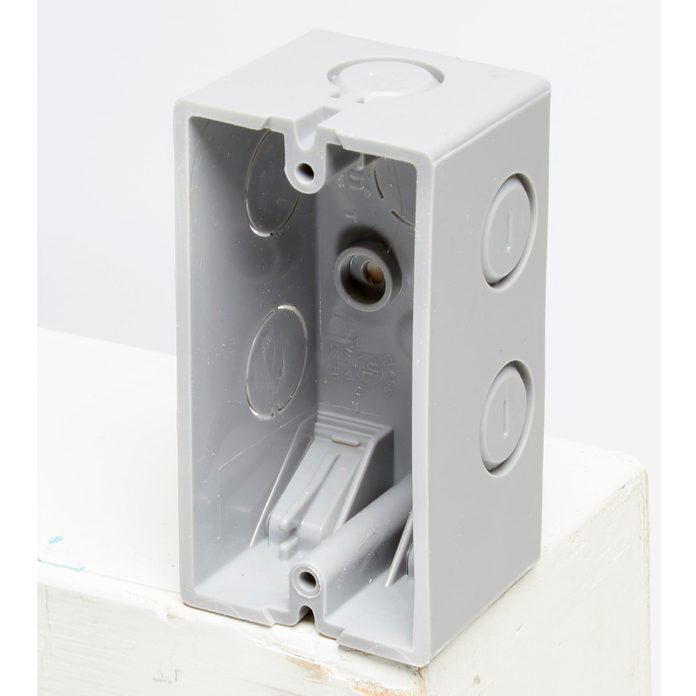
Surface-mount boxes
On concrete or block walls, surface-mount boxes and conduit are the way to go. These boxes can be plastic or metal. Because they're exposed, they need to be mounted perfectly plumb and level. They also require conduit to protect the wires.
How to Rough-In Electrical Wiring
7 / 11

Pan boxes
Four-inch round pan boxes (short for "pancake") come in handy if a ceiling joist is right where you need to install your dining room light fixture. Cutting a notch in the ceiling joist would weaken it. Pan boxes are only 1/2 in. deep and only have a volume of 6 cu. in., but they will safely accommodate the three wires you need for your light fixture. Plus: Check out the Top 10 Tools for DIY Electrical Work
8 / 11
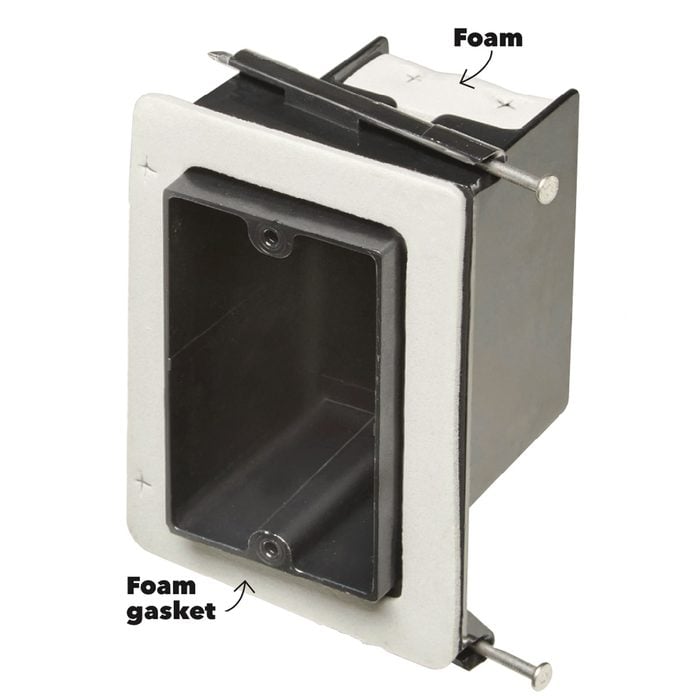
Gasket boxes
Energy code boxes are for insulated walls and ceilings. They typically have a molded flange with a foam gasket as well as foam- lined cable entries. This helps form an airtight seal to keep out drafts. I like to caulk the box flange right to the vapor barrier.
13 Things Your Electrician Wants You to Know
9 / 11

Metal boxes
You can wire a whole home using only non- metallic boxes, but metal boxes still come in handy for certain situations. They're extremely sturdy and work well where you need lots of volume in the box—for example, for a welder receptacle in your workshop or for a hub where multiple cables meet. As with nonmetallic boxes, get the large ones, which are 4 in. square by 2-1/8 in. deep. You'll find cover options for most configurations of switches and receptacles, as well as mud rings.
10 Silent Signs Your House has a Major Electrical Problem
10 / 11
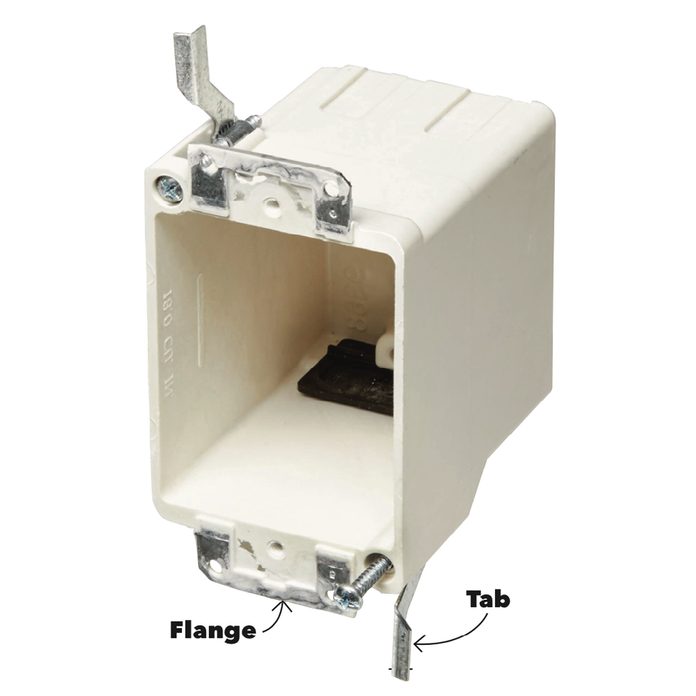
"Old work" boxes
Old work (or "remodeling") boxes are for walls that are covered with drywall or other material. They don't need to be fastened to a stud, so you can install them anywhere. There are several types. The one shown has flip-out tabs that squeeze the box flanges against the drywall. Using the box face as a marking template, you'll get a nice, close fit.
The 8 Most Common National Electric Code Violations DIYers Make
11 / 11

Low-voltage brackets
Unlike in the old days when homes had one or two phone jacks, today we have much more low-voltage wiring for computers, cable TV, home entertainment systems, and whole-house audio, security and temperature control systems. Save time and money by installing low-voltage brackets instead of electrical boxes. Low-voltage wiring doesn't necessarily need an enclosed box. In fact, you often don't want an enclosed box because it may require the wires to make a sharp bend, which impedes the performance of some cables.
Home Wiring Demystified: Electrical Cable Basics You Need to Know
Originally Published: June 05, 2019
Source: https://www.familyhandyman.com/list/electrical-box-basics-all-homeowners-should-know/
0 Response to "Can You Use Blue Electrical Boxes in Basement"
Post a Comment